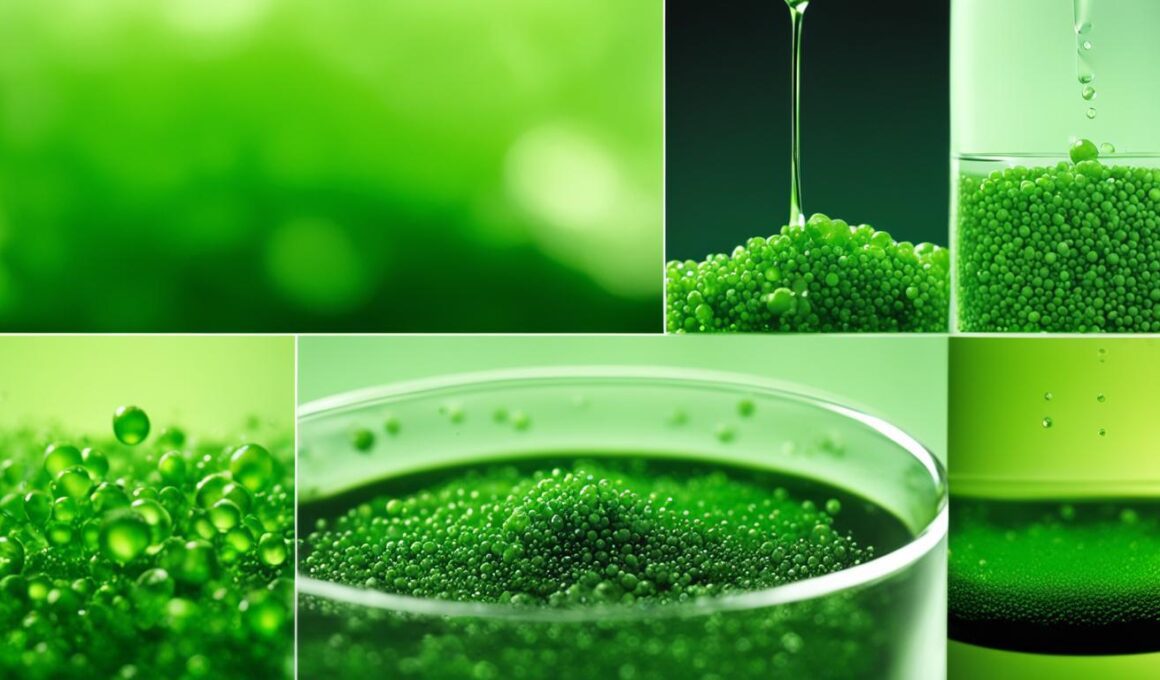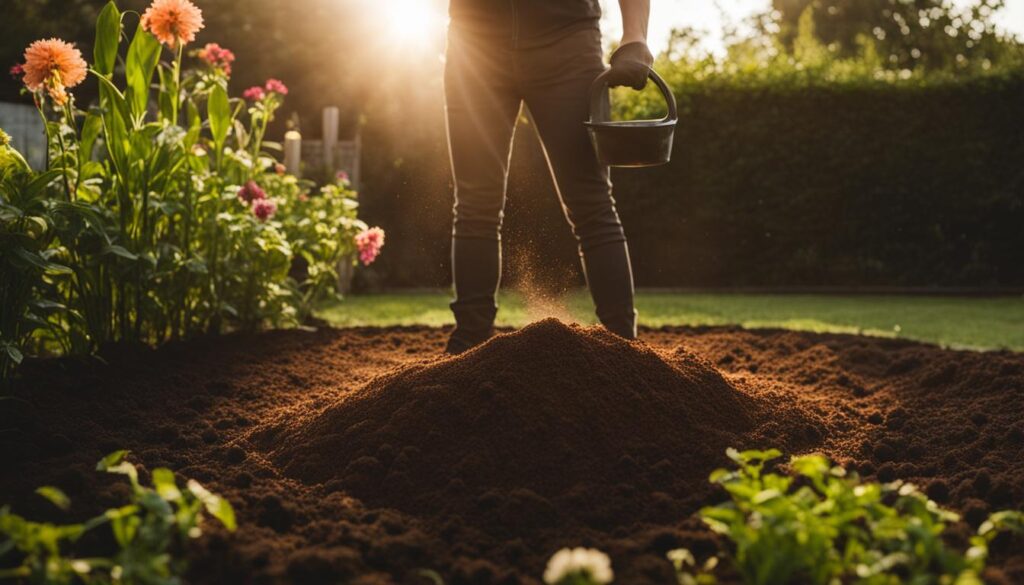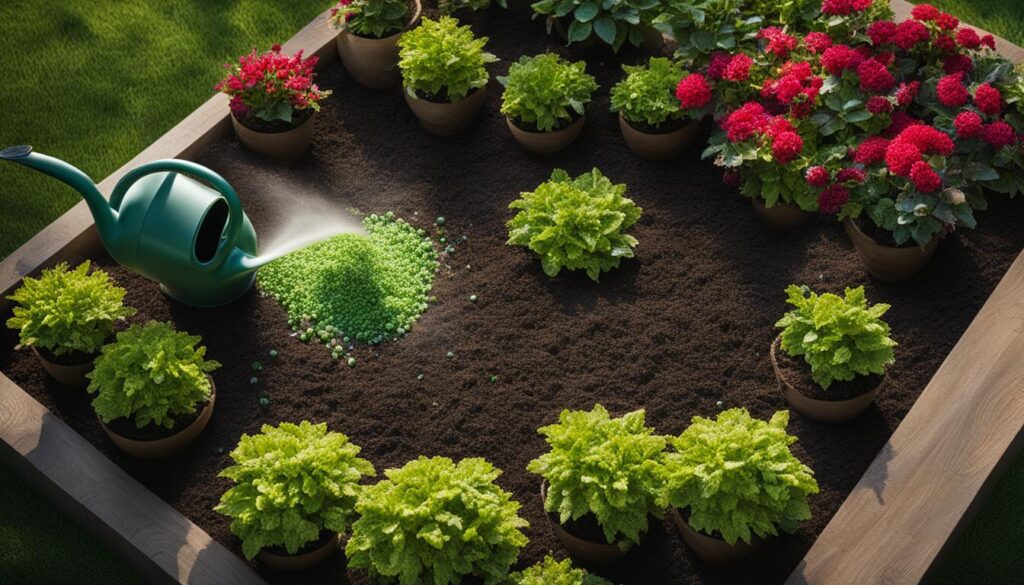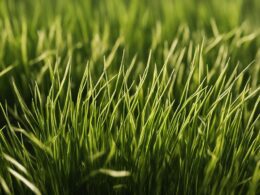Granular fertilizers are a popular option for providing a delayed release of nutrients to plants. Depending on the type of fertilizer and environmental conditions, the dissolution rate of granular fertilizer can vary. Generally, granular fertilizers can start to be available within a few days of application and take around two weeks to fully dissolve in the soil. Slow-release fertilizers, which have a coating that delays nutrient release, can take longer to dissolve but provide a more efficient and sustained nutrient supply to plants. Watering the soil before and after applying granular fertilizer helps activate the fertilizer and promote dissolution.
Post Summary
- Granular fertilizers provide a delayed release of nutrients to plants.
- The dissolution rate of granular fertilizer can vary depending on the type and environmental conditions.
- Granular fertilizers can start to be available within a few days of application and take around two weeks to fully dissolve.
- Slow-release fertilizers take longer to dissolve but provide a sustained nutrient supply.
- Watering before and after applying granular fertilizer helps activate the fertilizer and promote dissolution.
When to Apply Granular Fertilizers
Choosing the right time to apply granular fertilizers is crucial for maximizing their benefits. It is recommended to apply granular fertilizers well in advance of when plants will need the nutrients, as they typically take longer to dissolve and release nutrients compared to liquid fertilizers. Spring is the best time to apply granular fertilizer for lawn growth, and a second application can be made in the fall to prepare the lawn for winter dormancy. For annuals or vegetables, granular fertilizer should be applied at planting time and again in the middle of the growing season. Slow-release fertilizers take weeks to dissolve fully, so it’s important to consider timing when planning fertilizer application.
By applying granular fertilizers at the right time, you ensure that the nutrients are available when plants need them the most. Timing is especially crucial for slow-release fertilizers, as their slow degradation allows for a sustained nutrient supply. For lawns, applying granular fertilizer in early spring allows the nutrients to be readily available for the grass as it starts its growth phase. This helps promote healthy root development and overall vigor. A second application in the fall helps prepare the lawn for winter, ensuring it has sufficient nutrients to withstand the colder months.
For annuals and vegetables, applying granular fertilizer at planting time helps provide the initial nutrients needed for strong root development and early growth. Mid-season application supplies the necessary nutrients to support continued growth, flowering, and fruit production. It’s important to follow the recommended application rates for different types of plants and adjust the timing based on specific growing conditions and regional climate patterns.
Overall, the best time to apply granular fertilizer depends on the specific needs of the plants and the type of fertilizer being used. By understanding the nutrient requirements of your plants and considering the slow-release properties of granular fertilizers, you can make informed decisions about timing to maximize their effectiveness and ensure healthy plant growth.
How to Apply Granular Fertilizers
To apply granular fertilizers effectively, follow these steps:
- Test the Soil: Start by testing the soil to understand its nutrient content and pH level. This will help determine the right type and amount of fertilizer to use. Different plants have different nutrient requirements, so it’s important to tailor the fertilizer to your specific needs.
- Choose the Right Fertilizer: Select the appropriate granular fertilizer for your plants based on their nutrient needs and the results of the soil test. Read the guidelines provided on the fertilizer package to determine the right amount to use.
- Measure and Spread: Measure the recommended amount of granular fertilizer and evenly spread it across the soil or lawn. Use a broadcast spreader for large areas to ensure even coverage. Avoid clumping the fertilizer in one spot, as this may cause uneven nutrient distribution.
- Water Well: After applying the granular fertilizer, thoroughly water the soil or lawn to help dissolve the granules and activate the fertilizer. This will ensure that the nutrients are readily available to the plants.
- Monitor and Adjust: Monitor the health of your plants and adjust your fertilizing routine as needed. Different plants have different growth rates, so you may need to reapply the fertilizer at different intervals. Keep an eye out for any signs of nutrient deficiencies or excesses, and make adjustments accordingly.
Following these steps will help ensure that the granular fertilizer is applied properly and that your plants receive the nutrients they need for healthy growth.
Remember to always read and follow the instructions provided on the fertilizer package for best results. The right application technique combined with proper timing and watering will help maximize the benefits of granular fertilizer.
Comparison of Granular Fertilizer Application Methods
| Application Method | Advantages | Disadvantages |
|---|---|---|
| Hand Spreading | – Suitable for small areas – Allows for precise application |
– Time-consuming for large areas – May result in uneven distribution |
| Broadcast Spreader | – Quick and efficient for large areas – Provides even coverage |
– Requires proper calibration – May be impractical for small areas |
| Drip Irrigation | – Delivers nutrients directly to plant roots – Reduces nutrient loss through leaching |
– Requires drip irrigation system – More expensive to set up |
Table: Comparison of different granular fertilizer application methods.
Does Granular Fertilizer Need To Be Watered In?
Watering granular fertilizer is an essential step in ensuring its effectiveness. When you apply granular fertilizer to your plants or lawn, it’s crucial to water it in to help activate the fertilizer and promote dissolution. Watering the soil before applying granular fertilizer helps keep the granules in place, allowing the nutrients to be evenly distributed. This ensures that the plants receive the necessary nutrients for optimal growth.
After applying granular fertilizer, it’s important to water the soil again. This helps dissolve the granules and allows the nutrients to penetrate the root zone of the plants. Moist soil provides the ideal conditions for the granules to break down and release the nutrients gradually, promoting healthy plant growth.
Rainfall can also contribute to the dissolution of granular fertilizer. However, it’s important to note that excessive rainfall or a lack of water can disrupt the fertilization process. It’s best to provide sufficient water to ensure proper dissolution and nutrient release. By watering the granular fertilizer, you can ensure that your plants receive the maximum benefit from the applied nutrients.
Benefits of Watering Granular Fertilizer:
- Activates and dissolves the fertilizer granules
- Ensures even distribution of nutrients to plants
- Promotes gradual nutrient release for sustained plant growth
- Helps nutrients penetrate the plant’s root zone
To summarize, watering granular fertilizer is essential for its proper activation and dissolution. It helps distribute the nutrients evenly and ensures that plants receive the necessary elements for healthy growth. By providing sufficient water, you can maximize the benefits of granular fertilizer and promote optimal plant health.
Conclusion
In conclusion, understanding the dissolution rate of granular fertilizer is essential for effective fertilizer application and optimal plant nutrition. Granular fertilizers typically become available to plants within a few days of application and fully dissolve within approximately two weeks. Slow-release fertilizers provide a sustained release of nutrients over a longer period, while fast-release fertilizers offer a quick burst of nutrients.
Watering the soil before and after applying granular fertilizer is crucial for activating the fertilizer and promoting dissolution. Moist soil helps keep the granules in place during application and ensures the nutrients are effectively delivered to plants. It is important to monitor weather conditions and adjust watering accordingly to prevent excessive rainfall or drought conditions from disrupting the fertilization process.
Proper timing, application, and watering techniques are key factors in maximizing the benefits of granular fertilizer and optimizing plant health. Additionally, it is important to consider the specific needs and preferences of your plants when choosing between granular and liquid fertilizers. By following these guidelines, you can ensure that your plants receive the necessary nutrients for healthy growth and development.
FAQ
How long does it take for granular fertilizer to dissolve?
Granular fertilizer can start to be available within a few days of application and takes around two weeks to fully dissolve in the soil.
When is the best time to apply granular fertilizer?
Spring is the best time to apply granular fertilizer for lawn growth. A second application can be made in the fall to prepare the lawn for winter dormancy. For annuals or vegetables, granular fertilizer should be applied at planting time and again in the middle of the growing season.
How do I apply granular fertilizer?
Start by testing the soil to determine the nutrient content and pH level. Choose the appropriate granular fertilizer for your plants and measure the right amount based on the guidelines provided. Spread the granular fertilizer evenly across the soil or lawn using a broadcast spreader. Thoroughly water the soil or lawn after application to help dissolve the granules and activate the fertilizer.
Does granular fertilizer need to be watered in?
Yes, granular fertilizer needs to be watered in after application. Watering the soil before applying granular fertilizer helps hold the granules in place, while watering after application helps dissolve and activate the fertilizer. Providing sufficient water is crucial for proper dissolution and nutrient release.
What are the benefits of granular fertilizer?
Granular fertilizers provide a delayed release of nutrients to plants. They can start to be available within a few days of application and offer a sustained nutrient supply over time. Slow-release fertilizers, in particular, provide a more efficient and long-lasting nutrient release compared to fast-release fertilizers.
How Long Does It Take for Granular Fertilizer to Dissolve When Mixed with Water?
When dissolving granular fertilizer in water, the time it takes for the granules to break down can vary. Factors like temperature, agitation, and the type of fertilizer can impact the dissolution process. Generally, it can take a few minutes to a few hours for the granules to completely dissolve and be ready for application.












